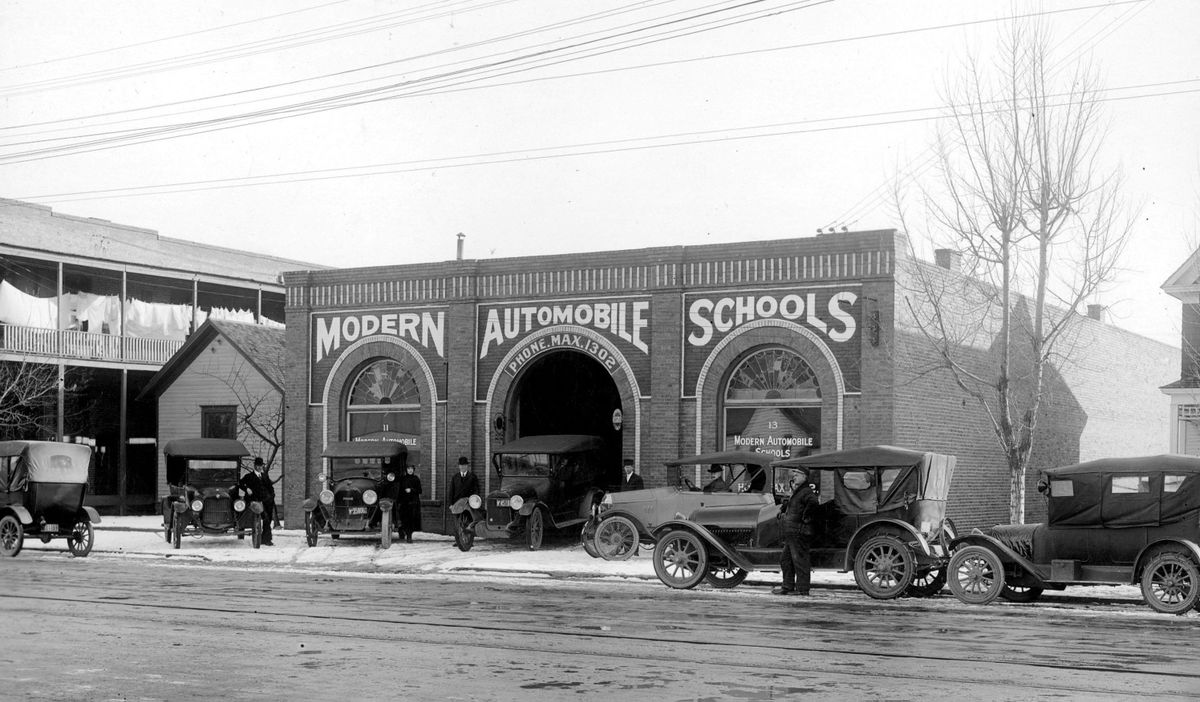Then and Now: Modern Automobile Schools

Sometimes in business, timing is everything. E.M. Robinson and Claude H. Messer organized a trade school called Modern Automobile Schools in Spokane in October 1917. The school was part of a trend, if not a chain, of similar schools across the country.
They started in a former welding shop at 11 W. Indiana Ave.
Messer and Robinson built their new building at 1803 W. Third Ave., along the Sunset Highway. They offered training in mechanics, driving and tire repair.
For the next several years, the schools recruited through classified ads that promised the skills to get a good job in just a few weeks. At their busiest, the school claimed it only took eight weeks to train a mechanic. Many early students were young men from farms who took the training then went back to farming.
The name would change to Modern Automobile and Tractor.
The United States entered World War I early in 1917, and the conflict became the first mechanized war. In March 1918, the U.S. War Department announced that the military needed 43,000 trained mechanics by July 1 and approximately 92,000 by Sept. 1 to operate the military’s trucks, tanks and automobiles .
After signing a lucrative government contract, Modern Automobile taught hundreds of young soldiers how to operate and work on engines. Messer and Robinson began renting rooms and buildings to house the trainees wherever they could, but eventually the military would establish residential barracks at Fort George Wright, Whitworth College and inside the Princess roller rink. The Spokesman-Review said 110 soldiers slept on cots inside the rink in 1918.
At one point the military trainees filled four training locations.
Messer, who was an electrical engineer, and pilot N.B. “Nick” Mamer founded the United States Aircraft Corp. around 1920, and the trade school also taught airplane building and maintenance to the company’s employees. It was one of the first businesses at Parkwater Air Field, which is now Felts Field.
For reasons unknown, the Spokane school disappeared around 1925. Its final location was at 1302 W. Second Ave. Other schools with the same or similar names continued operating in other cities. Messer, who retired after a career with Boeing, died in 1969 in California.